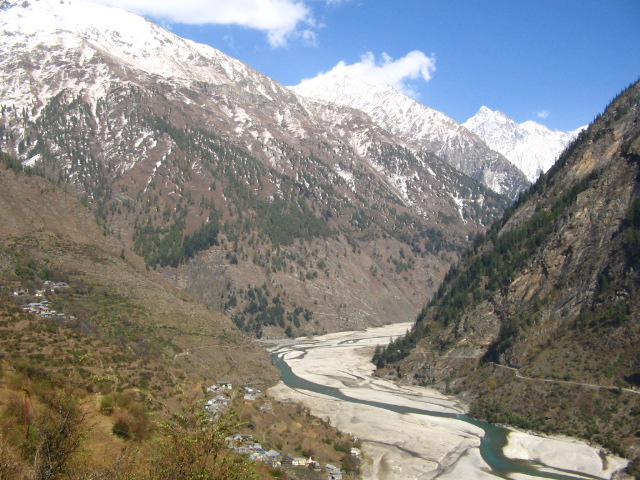National Environmental Engineering Research Institute (NEERI)
Water quality of the Bhagirathi, Ganga in the Himalayan region: A study by NEERI
Posted on 19 May, 2012 05:00 PM The Bhagirathi in its upper reaches, here seen near Dharali (Photo: Chicu Lokgariwar)
The Bhagirathi in its upper reaches, here seen near Dharali (Photo: Chicu Lokgariwar)
Guidance manual for drinking water quality monitoring and assessment - A document by NEERI and NICD
Posted on 20 Apr, 2011 03:09 AMIn order to safeguard the health of the people, drinking water must meet quality standards. The main issues involved in drinking water safety are water quality management, surveillance and control mechanisms.
Levels of contaminants need to be ascertained through standard procedures. Each agency involved in water supply in India, has its own laboratory test practices and this manual details methods for all parameters adoptable by all laboratories.
Drinking water quality monitoring and development of surveillance mechanisms - A pilot study done by NEERI in New Delhi
Posted on 20 Apr, 2011 02:30 AMThe WHO guidelines for drinking water quality aim to protect public health and the key way to ensure this is through the adoption of Water Safety Plans (WSP). WSP includes setting of health targets, risk analysis and its assessment to identify priority hazardous scenarios and management of the risk.
Water safety plan: A manual for pilot study areas of Hyderabad
Posted on 20 Apr, 2011 02:03 AMThe most effective means of consistently ensuring the safety of drinking water supply is through the use of a comprehensive risk assessment and management approach, that encompasses all steps in water supply from catchment to consumer. Such approaches are called Water Safety Plans (WSPs).
The aim of a WSP is to organize and systematize records of management practices applied to drinking water and to ensure workability of such practices to organized drinking water supply.
Application of Composite Correction Program for improvement in efficiency of water treatment plants - A WHO paper
Posted on 20 Apr, 2011 12:41 AMThe goal of safe and affordable drinking water and sanitation has not yet been achieved. The current practices of water purification are inadequate to produce secured water supply. Maintaining health protection at water supply systems has become more challenging with resistance of some pathogens to disinfection using chlorination and an increase in the immuno-compromised population (e.g., people with HIV, organ transplant patients, the elderly).
In this context, it has become essential to develop various tools such as Composite Correction Programme (CCP) and Water Safety Plans (WSP) to improve water purification and distribution systems, to achieve the goal of providing safe drinking water.